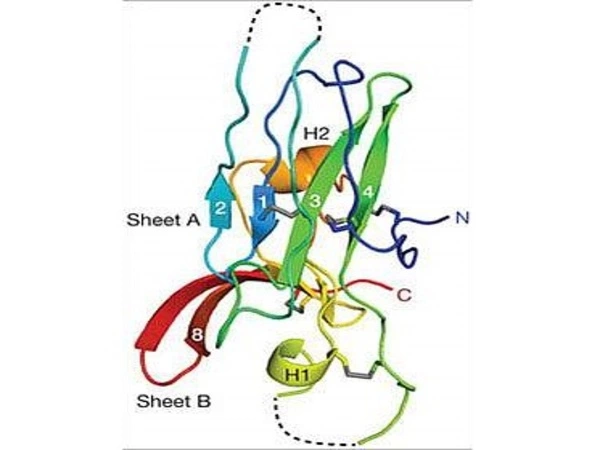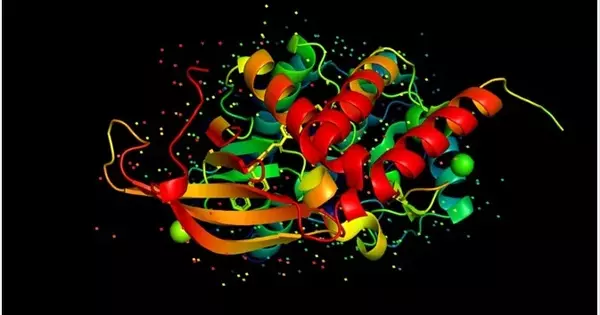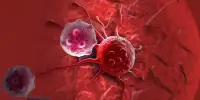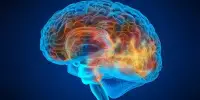A recent discovery points to the development of an effective HCV vaccine. A team led by scientists from Scripps Research and the University of Amsterdam has accomplished an important virology goal: mapping critical proteins that stud the surface of the Hepatitis C virus (HCV) and allow it to enter host cells at high resolution.
The discovery, published in Science, identifies key points of vulnerability on the virus, which can now be effectively targeted with vaccines.
“This long-desired structural information on HCV places a wealth of previous observations into a structural context and paves the way for rational vaccine design against this incredibly difficult target,” says study co-senior author Andrew Ward, Ph.D., professor in Scripps Research’s Department of Integrative Structural and Computational Biology.
This long-desired structural information on HCV places a wealth of previous observations into a structural context and paves the way for rational vaccine design against this incredibly difficult target.
Andrew Ward
The study was the product of a multi-year collaboration that included the Ward laboratory, the lab of Gabriel Lander, Ph.D. (also a professor in the Department of Integrative Structural and Computational Biology at Scripps Research); the lab of Rogier Sanders, Ph.D., of the University of Amsterdam; and the lab of Max Crispin, DPhil, at the University of Southampton.
It is projected that roughly 60 million people globally – including about two million Americans – have chronic HCV infections. The virus infects liver cells, typically establishing a “silent” infection for decades until liver damage becomes severe enough to cause symptoms. It is a leading cause of chronic liver disease, liver transplants and primary liver cancers.
The virus’s origins are unknown, but it is thought to have emerged at least several hundred years ago and then spread globally in the latter half of the twentieth century, particularly through blood transfusions. While the virus was mostly eradicated from blood banks after its discovery in 1989, it still spreads primarily through needle-sharing among intravenous drug users in developed countries and through the use of unsterile medical instruments in developing countries. The most effective HCV antiviral drugs are effective, but far too expensive for widespread use.

An effective vaccine could eventually eliminate HCV as a public health burden. However, no such vaccine has ever been developed – largely because of the extraordinary difficulty in studying HCV’s envelope protein complex, which is made of two viral proteins called E1 and E2.
“The E1E2 complex is very flimsy – it’s like a bag of wet spaghetti, always changing its shape – and that’s why it’s been extremely challenging to image at high resolution,” says co-first author Lisa Eshun-Wilson, Ph.D., a postdoctoral research associate in both the Lander and Ward labs at Scripps Research.
The researchers discovered that they could use a combination of three broadly neutralizing anti-HCV antibodies to stabilize the E1E2 complex in its natural conformation. Broadly neutralizing antibodies are those that can protect against a wide variety of viral strains by binding to relatively constant sites on the virus in ways that disrupt the viral life cycle.
Using low-temperature electron microscopy, the researchers captured images of the antibody-stabilized protein complex. The researchers were able to generate an E1E2 structural map of unprecedented clarity and extent at near-atomic scale resolution using advanced image-analysis software.
The majority of the E1 and E2 protein structures were detailed, including the critical E1/E2 interface and three antibody-binding sites. The structural information also shed light on the thicket of sugar-related “glycan” molecules that pervade E1E2. Viruses frequently use glycans to protect themselves from the immune system of an infected host, but structural data revealed that HCV’s glycans also play an important role in keeping the flimsy E1E2 complex together.
With these E1E2 details, researchers will be able to rationally design a vaccine that effectively elicits these antibodies to prevent HCV infection. “The structural data also should allow us to discover the mechanisms by which these antibodies neutralize HCV,” says co-first author Alba Torrents de la Peña, PhD, a postdoctoral researcher in the Ward lab.
















